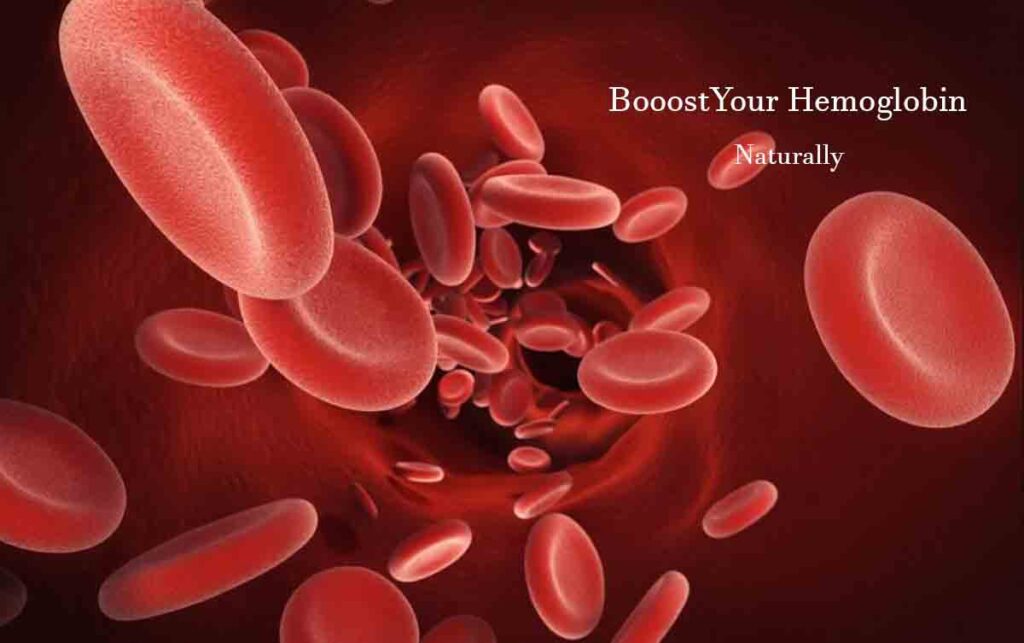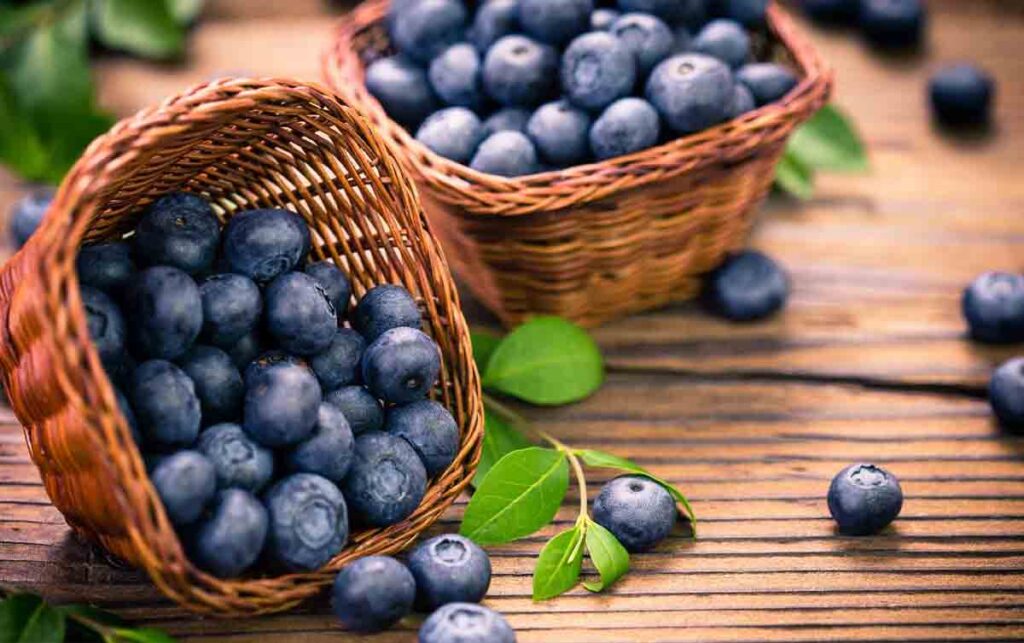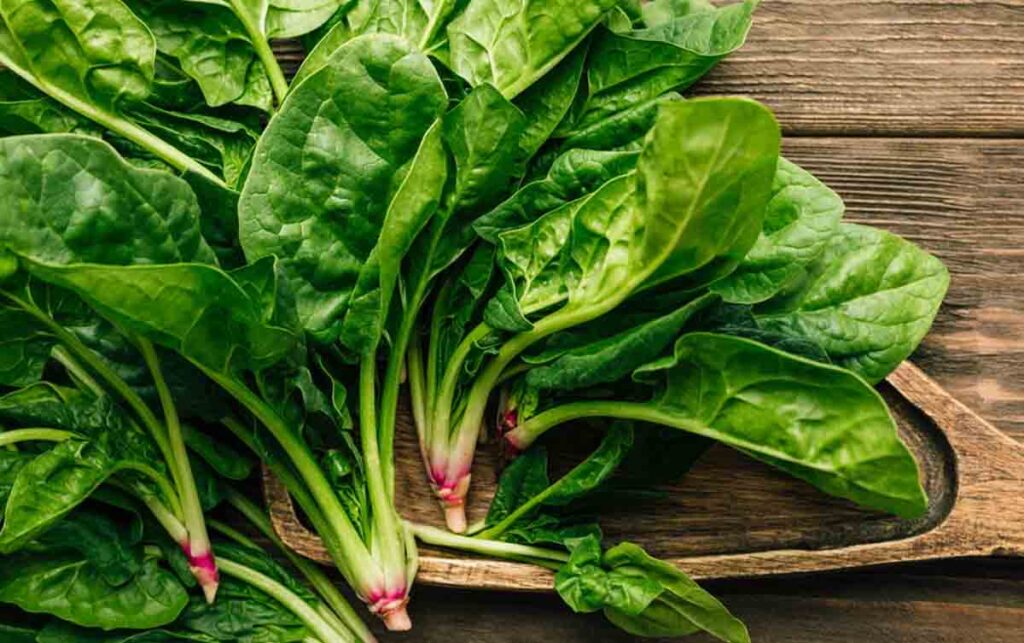Hemoglobin (Hb) is the oxygen-carrying protein present in red blood cells. It’s responsible for transporting oxygen throughout our body. As we age, hemoglobin levels decrease and become less effective at carrying oxygen, causing us to feel tired. Therefore, maintaining sufficient hemoglobin levels is necessary to ensure the normal function of our organs and tissues. Many foods can help boost hemoglobin naturally.
Foods to Improve Hemoglobin
Blueberries
Blueberries are rich in anthocyanins, antioxidants that help maintain good health. Anthocyanins are the pigments responsible for the coloring of blueberry fruits. One cup of fresh blueberries contains about 90 mg of vitamin C, 400 mg of fiber, and 50% of the daily recommended dose of manganese, iron, and copper. Research shows that people who eat foods high in anthocyanin-rich berries may have a reduced risk of cardiovascular disease, cancer, diabetes, and osteoporosis. Blueberries are also packed with flavonoids and antioxidants called proanthocyanidins (PACs). These compounds help prevent damage to DNA and inhibit the formation of free radicals. In addition, they protect the brain from oxidative stress and improve cognitive function. Blueberries are also a good source of folate, thiamine, niacin, pantothenic acid, riboflavin, pyridoxine, and phosphorus.
Benefits Face-Steaming and How to Do It at Home
Pomegranates
Pomegranate juice and fruit are loaded with vitamins A, B, C, D, E, and K. Vitamin D is produced only in our bodies by exposure to sunlight. All forms of vitamin D, including ergocalciferol (vitamin D2), cholecalciferol (vitamin D3), and alfacalcidiol (vitamin D3), were added to the vitamin list in 2013. Pomegranate is also a great source of fiber, calcium, magnesium, manganese, molybdenum, potassium, and selenium. Selenium helps fight inflammation and reduce oxidative stress. Fiber supports digestive health and helps lower cholesterol.
Poisonous Plants To Keep Away From Kids
Salmon
Salmon is full of omega-3 fatty acids. Omega-3 fats are powerful anti-inflammatory agents that help keep arteries clear of plaque buildup. According to a study published in the European Journal of Nutrition, the consumption of fish rich in omega-3 fats was associated with a decreased risk of heart attack and stroke. Eating fish once or twice per week can be enough. If you’re allergic to seafood, however, you might want to consider taking a supplement containing EPA and DHA, which are derived from algae.
Walking: 5 Common Mistakes You Must Avoid
Spinach
Spinach provides a wealth of nutrients, including protein, folic acid, and vitamin K. Consuming two cups of spinach each day can provide over 80 percent of the Daily Value of vitamin K and more than half of the Daily Value for folate. Spinach is also a source of lutein and zeaxanthin, carotenoids that protect eyesight and boost immune system functioning. Lutein prevents degeneration of the retina and cataracts, while zeaxanthin helps preserve the clarity of the lens and enhances night vision.
Avocado
Avocados are packed with monounsaturated fat, which helps lower bad LDL cholesterol. They are also high in fiber, potassium, and vitamin B6. Adding avocado to your diet encourages regular bowel movements and aids digestion. Studies show that avocados may play a role in weight loss by increasing satiety and reducing appetite.
How to make tasty Pot Phirni at Home
Green Tea
Green tea is chock-full of antioxidants. Antioxidants neutralize harmful molecules in the body and promote healthy cell growth. People who drink at least five cups of green tea each week may experience lower rates of certain cancers. Green tea is also a natural diuretic that flushes excess water out of the body. Drinking green tea after exercising can increase perspiration, aiding in the removal of toxins.
Natural way to dye your gray hair at home
Beans & Lentils
Beans and lentils contain high amounts of dietary fiber and phytochemicals, making them excellent choices for healthy weight management. Both beans and lentils are high in protein, low in saturated fat, and high in carbohydrates. They’re also low in calories and sodium.
Iron Deficiency
Low levels of iron in the body can lead to weakness and fatigue. Symptoms can range from mild to severe and include headaches, depression, irritability, poor concentration, loss of appetite, and menstrual irregularities. Iron deficiency can occur due to inadequate intake of iron or when the body cannot absorb iron properly. Most nutritional experts agree that eating foods rich in iron is best for preventing iron deficiency. The recommended daily allowance for iron is 8 mg/day. Dark green vegetables are excellent sources of iron, including spinach, collard greens, broccoli, kale, turnip greens, mustard greens, Brussels sprouts, cucumbers, peppers, onions, tomatoes, soybeans, lentils, chickpeas, tofu, barley, brown rice, blackstrap molasses, prunes, dried apricots, raisins, and figs.
How to reduce stress during pregnancy
What Happens When Your Hemoglobin Is Low?
Hemoglobin is an iron-containing protein that carries oxygen throughout the body. Hemoglobin comprises about 2% of blood volume and is responsible for transporting oxygen to cells throughout the body. When there is not enough hemoglobin present in the bloodstream, we call it anemia.
When hemoglobin is depleted, patients experience fatigue, dizziness, heart palpitations, and shortness of breath. If left untreated, symptoms may worsen over time and lead to death if severe. As such, it is critical to maintain high levels of hemoglobin in the bloodstream to avoid these complications.








